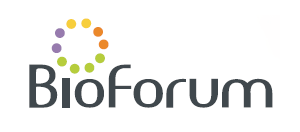21-22 JANUARY 2020, THE DAVID INTERCONTINENTAL HOTEL, TEL AVIV, ISRAEL
Polarized Raman Spectroscopy, Fluorescence Background Calibration and Reconstruction of an Ancient Manufacturing Practice of Parchment Manuscripts: The Case of the Temple Scroll
Roman Schutz, Weizmann Institute of Science (Israel) & Max-Planck-Institute for Colloids and Interfaces (Germany)
(roman-schuetz@hotmail.com)
Raman spectroscopy could be an ideal analytical tool for chemical and structural studies relevant to cultural heritage due to its non-destructive approach if proper laser setting are used. - If only there were not often problems with the background fluorescence that competes with the Raman signal
The fluorescent background occurs when the incident laser energy is high enough to excite the molecules into higher electronic states and to emit broadband light upon relaxation. Although the fluorescence spectrum is usually much broader than the Raman bands, its spectral profile appears modulated with local periodic amplitudes of equal or higher order than the actual Raman bands, making it difficult to distinguish between the two. The amplitudes of these profile modulations were carefully characterized with respect to the spectral frequency and the corresponding spectral absolute intensity. These spectral patterns are characteristic throughput features of the individual instrumental set-up settings. Spectral correction with respect to the throughput intensity profile is therefore necessary. In particular, in the presence of dominant fluorescence, spectral throughput calibration helps distinguish the Raman bands from the smoothed fluorescence background by analytically extracting the modulation’s pattern. A manual approach for such spectral correction has been tested using a prior extracted throughput calibration function, the efficiency and application of which is shown on fluorescent archaeological materials, presented together with the study of the ancient manuscript The Temple Scroll.
The Temple Scroll is part of the miraculously preserved 2000-year-old Dead Sea Scrolls Collection containing ancient Jewish texts of invaluable historical significance discovered in the caves at the northwestern shore of the Dead Sea in the mid-20th century. The texts were mainly written on parchment and exhibit vast diversity in their states of preservation, which requires a high level of attention for proper conservation. The 8m long Temple Scroll is outstanding due to its exceptional thinness and bright ivory color. The parchment has a layered structure consisting of a collagenous base material covered by an overlayer containing atypical inorganic compounds with text written thereon. Polarized Raman Spectroscopy was used to quantify the molecular integrity disorder of collagen fiber found in all layers, depicting the level of degradation. The results reveal partly very well-preserved collagen fibers inside the parchment covered by the inorganic layer. The chemical composition of the inorganic layer, studied by Raman and x-ray spectroscopies, revealed a variety of evaporitic sulfate salts. This indicates a unique ancient production technology in which the parchment was modified by adding the inorganic layer as a writing surface. Understanding the scroll’s structure and the chemical properties of these minerals is particularly important in developing appropriate conservation strategies for preserving these invaluable historical documents.
Organized & Produced by:

POB 4043, Ness Ziona 70400, Israel
Tel.: +972-8-9313070, Fax: +972-8-9313071
Site: www.bioforum.co.il,
E-mail: bioforum@bioforum.co.il